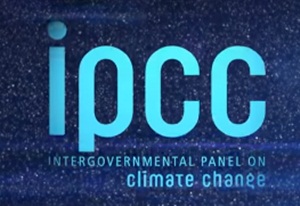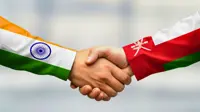The latest Intergovernmental Panel on Climate Change (IPCC) Special Report highlights the urgency of timely, ambitious and coordinated action to address unprecedented and enduring changes in the ocean and cryosphere – the parts of Earth covered by glaciers, sea ice and permafrost.

On Wednesday (25 September), the Intergovernmental Panel on Climate Change (IPCC) released a Special Report on the Oceans and Cryosphere in a Changing Climate (SROCC). This new report is the first to exclusively address the impacts of a warming world on the world’s oceans and the cryosphere.
The report reveals the benefits of ambitious and effective adaptation for sustainable development and, conversely, the escalating costs and risks of delayed action.
The ocean and the cryosphere – the frozen parts of the planet – play a critical role for life on Earth. A total of 670 million people in high mountain regions and 680 million people in low-lying coastal zones depend directly on these systems. Four million people live permanently in the Arctic region, and small island developing states are home to 65 million people.
Global warming has already reached 1°C above the pre-industrial level, due to past and current greenhouse gas emissions. There is overwhelming evidence that this is resulting in profound consequences for ecosystems and people. The ocean is warmer, more acidic and less productive, melting glaciers and ice sheets are causing sea levels to rise, and coastal extreme events are becoming more severe, the report points out.
Marine heat waves
The report attributes the emergence of extreme oceanic conditions to increasing carbon emissions, a catastrophe of human origin, that have caused marine heat waves, extreme El Niño oscillations and extremely severe cyclones. These events are new to our world and each of them has far-reaching impacts, especially on India and countries situated along the rim of the Indian Ocean.
In 2015, the world experienced one of the strongest El Niño oscillations in modern instrumental history. The El Niño is a phenomenon associated with currents of warm water in the Pacific Ocean and generally occurs every two to seven years. The occurrence of an El Niño is characterised by warm ocean temperatures in the east Pacific, which then affect global weather.
India depends on the monsoons, and a moderate El Niño can render the monsoons deficient and erratic. When an extreme El Niño hit the world in 2015, India reeled with back-to-back droughts. Ethiopia and South Africa also experienced their worst droughts in 50 years. Together with severe heat-waves, the altered climate caused a 9-million-tonne deficit in the production of cereals, leaving more than 28 million people in need of humanitarian aid, says the report.
Such extreme El Niño events are likely to become more frequent in future, from one event every 20 years in the period 1891-1990 to one every 10 years by the end of the 21st century. Given what we have seen, such intensification is likely to immensely impact future monsoons, and in turn the economy of India specifically and South Asia generally.
The IPCC Special Report on the Ocean and Cryosphere in a Changing Climate, approved on 24 September 2019 by the 195 IPCC member governments, provides new evidence for the benefits of limiting global warming to the lowest possible level – in line with the goal that governments set themselves in the 2015 Paris Agreement.
The report calls for urgent measures for reducing greenhouse gas emissions to limit the scale of ocean and cryosphere changes so that ecosystems and livelihoods depending on them can be preserved.
“The open sea, the Arctic, the Antarctic and the high mountains may seem far away to many people,” said Hoesung Lee, Chair of the IPCC. “But we depend on them and are influenced by them directly and indirectly in many ways – for weather and climate, for food and water, for energy, trade, transport, recreation and tourism, for health and wellbeing, for culture and identity.”
“If we reduce emissions sharply, consequences for people and their livelihoods will still be challenging, but potentially more manageable for those who are most vulnerable,” Lee said. “We increase our ability to build resilience and there will be more benefits for sustainable development.”
The report outlines climate-related risks and challenges that people around the world are exposed to today and that future generations will face and presents options to adapt to changes that can no longer be avoided, manage related risks and build resilience for a sustainable future. The assessment, however, shows that adaptation depends on the capacity of individuals and communities and the resources available to them.
“The world’s ocean and cryosphere have been ‘taking the heat’ from climate change for decades, and consequences for nature and humanity are sweeping and severe,” said Ko Barrett, Vice-Chair of the IPCC. “The rapid changes to the ocean and the frozen parts of our planet are forcing people from coastal cities to remote Arctic communities to fundamentally alter their ways of life,” she added.
“By understanding the causes of these changes and the resulting impacts, and by evaluating options that are available, we can strengthen our ability to adapt,” she said. “The Special Report on the Ocean and Cryosphere in a Changing Climate provides the knowledge that facilitates these kinds of decisions.”
People in mountain regions are increasingly exposed to hazards and changes in water availability, the report said.
Glaciers, snow, ice and permafrost are declining and will continue to do so. This is projected to increase hazards for people, for example through landslides, avalanches, rockfalls and floods.
Smaller glaciers found for example in Europe, eastern Africa, the tropical Andes and Indonesia are projected to lose more than 80 per cent of their current ice mass by 2100 under high emission scenarios. The retreat of the high mountain cryosphere will continue to adversely affect recreational activities, tourism, and cultural assets, the report pointed out.
As mountain glaciers retreat, they are also altering water availability and quality downstream, with implications for many sectors such as agriculture and hydropower.
Glaciers and ice sheets in polar and mountain regions are losing mass, contributing to an increasing rate of sea level rise, together with expansion of the warmer ocean.
While sea level has risen globally by around 15 cm during the 20th century, it is currently rising more than twice as fast – 3.6 mm per year – and accelerating, the report showed.
Rising sea levels
Sea level will continue to rise for centuries. It could reach around 30-60 cm by 2100 even if greenhouse gas emissions are sharply reduced and global warming is limited to well below 2°C, but around 60-110 cm if greenhouse gas emissions continue to increase strongly.
Sea level rise will increase the frequency of extreme sea level events, which occur for example during high tides and intense storms. Indications are that with any degree of additional warming, events that occurred once per century in the past will occur every year by mid-century in many regions, increasing risks for many low-lying coastal cities and small islands.
Without major investments in adaptation, they would be exposed to escalating flood risks, the report shows. Some island nations are likely to become uninhabitable due to climate-related ocean and cryosphere change, the report said, but habitability thresholds remain extremely difficult to assess.
Increases in tropical cyclone winds and rainfall are exacerbating extreme sea level events and coastal hazards. Hazards will be further be intensified by an increase in the average intensity, magnitude of storm surge and precipitation rates of tropical cyclones, especially if greenhouse gas emissions remain high.
Warming and changes in ocean chemistry are already disrupting species throughout the ocean food web, with impacts on marine ecosystems and people that depend on them, the report said.


.webp)




















